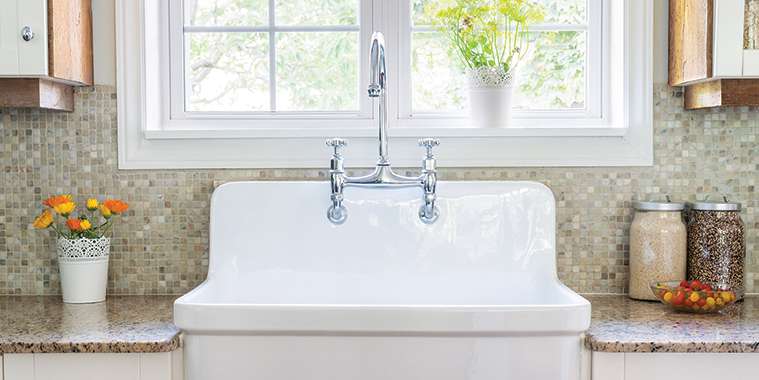Peel-and-stick backsplash tile is one of the best materials you can use to bring your kitchen or bathroom into this decade. Home improvement novices rejoice: These adhesive-backed plastic or vinyl squares that mimic the look of tile are extremely simple to install, because you don’t have to worry about dealing with mortar, grout, or any other messy substance required for traditional tiles.
The peel-and-stick version might be innovative, but if you’re not using the real thing, can your decor end up looking tacky? Basically, are peel-and-stick tiles any good? And more importantly, do peel-and-stick tiles last?
It’s a fine line to toe, which is why we’re here to help you weigh the benefits and drawbacks of peel-and-stick tile. Here’s what to know about peel-and-stick backsplash tile.
Types of peel-and-stick tile
Peel-and-stick tile, like traditional tile, comes in a variety of materials. One way to choose the right tile for your home is to think about the material you want to feature and go from there.
• Vinyl Made with foam or plastic backing, this tile tends to be the cheapest on the market, starting at $8 for a set of eight panels.
• Metal Yup, it’s real (lightweight) metal — usually aluminum — with a sticky adhesive. This tile will run about $16 for a package that covers 1 square foot.
• Glass This glossy style offers a more glamorous look. Antique mirrored glass ($25 per square foot, Home Depot) will open up your kitchen and make it look more spacious.
• Stone Get the look of a real slate backsplash without having to deal with messy grout or mortar. Home Depot has some great options for about $15 per square foot.
• Gel Faux ceramic or glass tiles are made from a 3D gel material. Fancy a white subway tile backsplash? It’s typically made of gel.
Advantages of peel-and-stick tile
Peel-and-stick tile is ideal for people who can’t (or don’t want to) install permanent decor in their home.
They’re great if you’re renting, but make sure the material is removable.
They’re also far less difficult to install than traditional tile, which requires hours of time and lots of materials (e.g., mortar, grout, tile spacers, etc.). All you have to do is measure the space, peel off the backing, and stick the tile sheet to the wall.
If you’re looking for a quick update at a good price, a peel-and-stick backsplash fits the bill.
Disadvantages of peel-and-stick vs. tile
When it comes down to it, peel-and-stick backsplash tile isn’t the real deal, which, some decor experts believe, can make it look cheap.
Very thin peel-and-stick kits won’t give you any of the depth you’d see with real tile.
Of course, you can pay for higher-quality kits (e.g., metal or glass), but then the cost goes up. So you’re not really saving money.
Another potential downside? The adhesive, especially on renter-friendly tiles that are meant to be removed, can wear down, especially in a kitchen where there’s a lot of moisture.
Unless it has permanent adhesive, anything peel-and-stick might fall off the wall, or possibly damage the surface behind it. And if you plan on moving in the near future, think twice about using peel-and-stick tile for a DIY backsplash. Today’s buyers are smarter and much better at spotting cheap, quick fixes.
If potential buyers see a peel-and-stick backsplash, they might wonder about what other corners you’ve cut in the home.
How to install peel-and-stick backsplash tile
Luckily, most of the instructions for installation are in the name! Just peel, and stick.
To apply peel-and-stick backsplash tiles, start with a clean surface. Use a cleaning spray or soap and water to remove any gunk from the wall and let it dry. This step is critical for optimal adhesion, so don’t get lazy. Do a thorough job so that your tile doesn’t start peeling and falling off the wall the next day.
Measure the space carefully, and use a ruler and sharp box cutter to trim the amount you’ll need for the space. Remove part of the back sheet and adhere the backsplash to the wall, pulling off more of the back sheet as you carefully adhere the backsplash to the wall. Try not to stop and start as this can add air bubbles under the surface. Smooth the surface with the edge of a credit card or ruler.
That’s it — a brand new look with no grout to clean up and no drying time!
— Realtor.com



